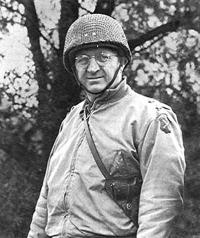
Lt. Gen. Manton S. Eddy, commander XII Corps.
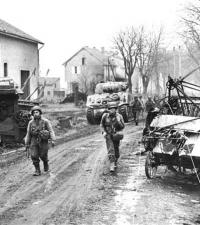
Men of the 378th Infantry, 95th Division, enter Metz 17 Nov. 1944.
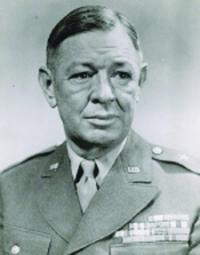
Major Gen. Stafford LeRoy Irwin in 1946.
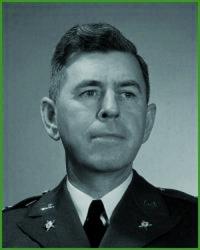
General Harry Lewis Twaddle

US infantry units at the Metz forts during the reduction process.
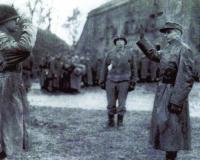
General Nelson, commander of 26th ("Yankee") Division, from Massachusetts, is accepting the surrender of Fort Jeanne d'Arc.
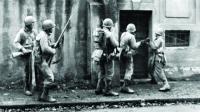
Troops of US 5th Infantry Division conducting a house-to-house search in Metz on 19 Nov. 1944.
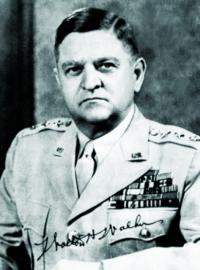
Walton Harris Walker, commander US XX Corps.

Troops of the US 5th Infantry Division entering Metz on 18 Nov. 1944.

An American P-47 Thunderbolt dive bombing Fort Driant before the initial attack.
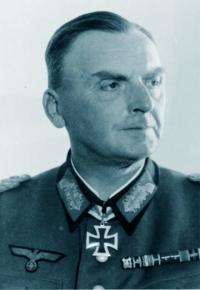
Henrich Kittel, commander 462 Volksgrenadier Div., wearing Knight’s Cross.
BY THIS WEEK, 70 years ago, General George S. Patton’s Third Army’s race across France had come to a screeching halt. There were three reasons for this: (1) lack of fuel; (2) the diversion to liberate Paris; (3) German fortification at, and defense of, Metz. But for the first two, after the destruction of two German field armies and the loss of three very competent and respected Field Marshals - Gerd von Rundstedt (discharge), Erwin Rommel (injuries/suicide) and Günther von Kluge (suicide) - the path to Germany was wide open.
The 3,000-year-old city of Metz is located in the Lorraine region of Northeast France, at the confluence of the Moselle and Seille Rivers, near the borders of Germany and Luxembourg. Today, the city has a population of about 125,000. During the war, its population fluctuated between 70,000 - 75,000. From the Franco/Prussian War of 1871, until the end of World War I, it had been a part of the German Empire and was the capital of the German Department of Lorraine. After Germany’s defeat in World War I, the area reverted to France. The city was protected by two rings of forts, built by the Germans prior to World War I.
Metz was in the area defended by the German First Army, under the command of General Otto von Knobelsdorff. General von Knobelsdorff was a decorated veteran of World War I and had served with valor on the Eastern Front, first as commander of 19th Panzer Division, then as commander of a Panzerkorps, until he was assigned command of First Army on September 6, 1944. To defend Metz, General von Knobelsdorff had available the following: the Götz von Berlichingen SS Panzergrenadier Division, commanded by Dr. Eduard Deisenhofer; the 462nd Volksgrenadier Division, commanded by Heinrich Kittel; the 3rd Panzergrenadier Division, commanded by Walter Denkert.
The Götz von Berlichingen was named for a German knight of the 16th century who lost his right hand and forearm in battle and wore a, very advanced, iron prosthetic. The clenched fist of the prosthetic was the Division’s symbol. Although it was an SS Division, it was not of the elite quality of others, such as the Liebstandarte Adolf Hitler, Das Reich, Totenkopf or Viking. It had only been formed in October 1943. Many of its original soldiers were Romanian Germans and Frenchmen. By August 1944, when Dr. Deisenhofer took command, it still was under-equipped. By the end of September, SS-Standartenführer Deisenhofer, who had earned a PhD in Political Economics, was wounded and removed to Berlin. He would ultimately be replaced by SS-Brigadeführer Werner Ostendorff. In the interim, the division was commanded by, first, SS-Standartenführer Thomas Müller and then SS-Standartenführer Gustav Mertch.
With the enormous losses suffered by the Wehrmacht, on both the Eastern and Western Fronts, in the spring and summer of 1944, the Reich turned to the Volksgrenadier Divisions. These divisions were smaller and were trained and equipped, primarily, for defensive purposes. On November 14, General Kittel was given command of the newly formed 462nd Volksgrenadier Division and of the city’s defense. A World War I veteran, he came directly from the Eastern Front, where he had, most recently, been the commandant of the Krakow garrison.
Panzergrenadier Divisions were so designated because they consisted of motorized infantry and a battalion of tanks. The 3rd Panzergrenadier Division had been destroyed at Stalingrad, and later reconstituted, after which it fought at Anzio. General Denkert took command on June 25, 1944, following its transfer to France. After helping to stop General Patton’s Third Army at Metz, it was transferred to the Hürtgen Forrest.
Third Army’s XX Corps, commanded by Walton H. Walker, made first contact with the enemy, in the Metz region, in early September, when its 5th Infantry Division, commanded by Stafford LeRoy Irwin, was stopped by the Götz von Berlichingen. On September 27, after an intense bombardment, General Irwin’s 5th Division assaulted Fort Driant, located five miles southwest of Metz. Although outnumbered by, at least, 3-1, the German defenders repulsed the American attack. Finally, on October 9, General Patton abandoned efforts to take the fort and bypassed it. Fort Driant ultimately surrendered on November 8, 1944. In addition to valuable time, the failed attempt to capture Fort Driant had cost the Americans 64 killed (of which 21 were officers), 547 wounded and 187 missing.
One of the forts protecting Metz was Jeanne d’Arc, located about five miles west of Metz. The fort was garrisoned with 1900 soldiers and equipped with: six 100 mm guns; six 150 mm howitzers; four 77 mm guns and many machine guns. Jeanne d’Arc and Fort François de Guise were connected by seven smaller forts known as “the Seven Dwarves.”
Third Army launched an assault on November 3, which penetrated the city’s outer defenses. The U.S.Army Air Force, on November 9, launched an assault of 1200 B-17s and B-24s, but the 3753 tons of bombs were dropped from 20,000 feet and most were ineffective. The 95th Infantry Division, from Oklahoma, commanded by Harry L. Twaddle, assaulted “the Seven Dwarves” after a dawn artillery barrage, and by 2:00 P.M. they were captured, leaving Jeanne d’Arc surrounded. On November 18, GIs began entering the city. General Kittel was wounded and captured three days later. Although the Americans had captured the city, the last fort - the Jeanne d’Arc - did not surrender until December 13.
NEXT WEEK: AACHEN
Mr. Wimbrow writes from Ocean City, Maryland, where he practices law representing those persons accused of criminal and traffic offenses, and those persons who have suffered a personal injury through no fault of their own. Mr. Wimbrow can be contacted at
wimbrowlaw@gmail.com










